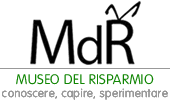
Where does Italy stand on financial education?
According to the results of the 2024 Edufin Index, which measures the awareness and behavior of Italians in financial and insurance matters, the level of financial literacy in Italy remains insufficient, with an average score of 56 out of 100—while the passing threshold is set at 60.
Specifically, awareness levels have remained stable, but there has been a slight decline in the behavioral component that assesses how Italians make decisions about their finances (57 in 2024 versus 58 in 2023).
The best results are recorded among men, those aged 45-64, and residents in the Northeast. In other words, significant gaps persist due to factors such as age, geographic location, and gender.
Women and Financial Literacy
The 2024 Edufin Index indicates that the gender gap remains unchanged compared to 2023, with a 5-point difference (women scoring an average of 53 compared to men’s 59). This disparity continues to hinder women’s economic independence.
In some regions, the gender gap is particularly pronounced. For example, in Campania, the gap reaches 8 points, with women scoring 50 compared to men’s 58.
These findings are alarming, as financial literacy in Italy is an essential component of women’s empowerment and economic independence.
This trend aligns with findings from previous studies, such as the 2017–2018 report Women and Savings Management, which highlighted that the gender gap is evident not only in financial skills but also in the attitudes and behaviors women adopt when managing savings.
The gender gap in financial education in Italy is influenced by several factors. Among these, a lower inclination among women to seek information on financial and insurance topics and reduced decision-making autonomy within couples stand out.
Employment also plays a critical role: women who work and contribute significantly to the family budget tend to have higher levels of financial literacy.
An interesting aspect revealed by a previous study conducted by the Museum of Saving, Measuring Financial Education, is the so-called wording or framing effect. The research found that women tended to perform better when questions were phrased in a more personal and engaging manner. However, as the study noted, “the wording or framing effect deserves further investigation but does not appear to explain the lack of financial skills/knowledge among the Italian population, which likely stems from deeper structural and cultural reasons related to attitudes toward money.” This suggests that the challenges associated with financial literacy are rooted in broader structural and cultural factors, beyond how content is presented.
The Edufin Index also shows that family status significantly impacts financial decision-making. Among single individuals, no gender gap exists. However, within couples, women’s perspectives weigh significantly less.
When single, both men and women almost always make financial decisions independently. In contrast, within a couple, women are more likely to share decision-making with their partner.
Moreover, the time women dedicate to caregiving and household responsibilities far exceeds that of men, even when women earn a higher income than their partners. Women invest an average of 5 hours and 5 minutes daily in household and childcare duties, compared to men’s 1 hour and 48 minutes. Notably, 60% of women who are the primary earners still bear full responsibility for domestic and family care (versus just 10% of men in the same situation).
Despite these discouraging statistics, there are signs of hope: among younger generations, the gender gap is beginning to narrow. This suggests that financial education initiatives targeting young people are starting to yield positive results.
Promoting financial literacy in Italy must occur at all levels, from schools to families, to ensure that everyone, regardless of gender, possesses the skills necessary to make informed and conscious decisions.
The Museum of Saving has always been committed to spreading financial education at all levels, with a particular focus on women’s economic independence.
To learn more, visit our website and check out the blog.
